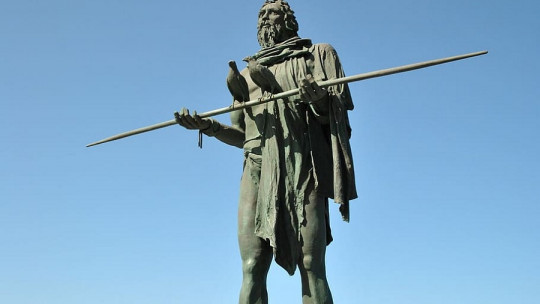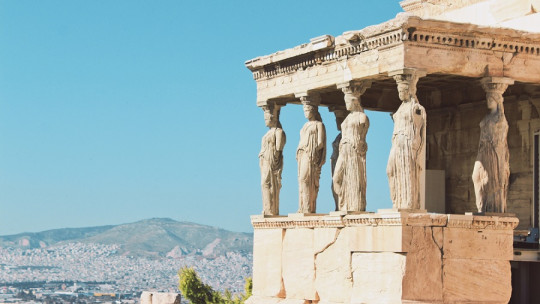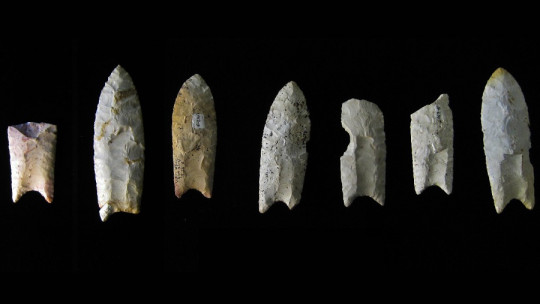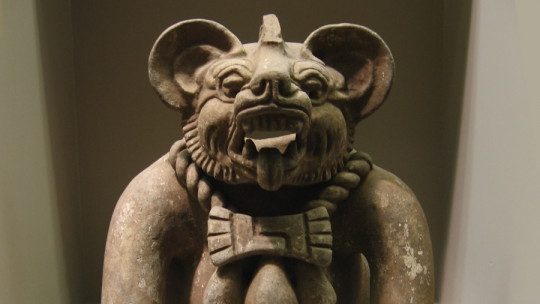
Before the Castilian conquest of the Canary Islands, back in the 15th century, an aboriginal culture lived in the archipelago: the guanches
Although archaeological excavations and contacts with Europeans have allowed us to know a little about this culture, its language, religious rites and social organization, many Guanche aspects remain a mystery. Let’s travel to the Canary Islands to discover this interesting culture.
Who were the Guanches?
The Guanches are the name by which they are known. the ancient aborigines of the Canary Islands, although its etymological origin refers above all to the culture that inhabited the island of Tenerife before the Castilian conquest of 1496. They have been related to the Berber peoples of North Africa.
The word Guanche has an uncertain origin, although several historians, philologists and conquerors of the time point out that it comes from the Guanche language itself, the word already appearing in official documents from the time of the conquest. The word Guanche is probably a syncopated form of “guanchinerfe”, which would mean “man of Chinerfe”, Chinerfe being the name that the Guanches gave to the island of Tenerife.
Where they came from?
The Guanches had to arrive by sea, despite the fact that the first contacts between these peoples and the Europeans indicated that They had lost all knowledge of navigation Unlike what is usually seen in other island cultures, they did not have any type of boat that allowed them to travel between islands, even though they had to come from somewhere. The curious thing is that this fact was what caused the Guanche groups on each island to differentiate themselves very markedly over time.
According to the archaeological sites of Icod de los Vinos (Cueva de los Guanches), the first humans to inhabit Tenerife must have lived in the 6th century BC. C. Through genetic analysis, it has been seen that These populations must have been related to the ancient Berbers of North Africa About 55% of the Guanche lineage is related to the genetics of the people of the Maghreb.
The colonization of the islands by African Americans occurred, surely, through various migrations, motivated by the desertification of the Sahara and the search for places free of the Phoenician and Roman invasion that settled on the African Mediterranean coast.
What were they like physically?
According to descriptions of the first European explorers, such as the friar Alonso de Espinosa, the Guanches of the island of Tenerife had two subraces: those from the south were dark-skinned, while those from the northern part were whiter. and even blondes.
Anthropological studies have divided the Guanche remains into two types, depending on its cranial shape. There are those who have been called chromanoids, with a wide and robust face, and an elongated and narrow skull, and the Mediterranean ones, with high faces and short skulls.
Although we are talking about a human group like any other, what is striking is that it seems that they presented a marked sexual dimorphism. Men were more robust and taller, measuring between 160 and 170 centimeters, while women rarely exceeded 160 cm It should be noted that these heights varied depending on the area. There was a population that lived in the mountain ranges of Anaga and Teno, isolated from the rest, where men were no taller than 160 cm and women were less than 150 cm, having less sexual differentiation.
Their life expectancy must have ranged between 30 and 45 years, although the nobles, better fed and without having to make great physical effort, probably lived up to 65 years.
Characteristics of the culture of the natives of the Canary Islands
These are the main cultural characteristics of the Guanches.
The Guanche language
The Guanche language is the set of languages spoken by the Canarian aborigines. This language It was related to the Berber languages, and for this reason it has also been called Canary Berber or Insular Tamazight Inscriptions and stone engravings have been found whose signs are similar to the Tifinagh alphabet used by the Berbers, which is considered evidence of the relationship with the Tamazight.
Although it is most likely that the language became extinct around the 18th century, there are those who believe that it could have survived until the 19th century. Today there is no known native speaker of this language, in addition to the fact that There is relatively little information about its grammar and lexical either.
However, there are quite a few Canarian place names whose origin is Guanche, especially the names of municipalities, such as Gáldar, Alajeró, Timijiraque and Chipude, as well as some personal names, such as Mahey, Acoidan, Agoney, Ossinissa. Several words have also survived in the Spanish dialect spoken in the Canary Islands, such as baifo (goat calf), gofio (roasted and ground grain), gánigo (clay vessel), beletén (first milk) or guirre (vulture).
What did they feed on?
The main Guanche subsistence activity was livestock and transhumance herding, basically composed of goats and sheep. They had also introduced pigs and small breed dogs, called cantas. Remains of cats and hedgehogs have been found in some sites and it is believed that all of these animals could have been part of the Aboriginal diet, rather than being pets or tissue production animals. From the cattle, in addition to eating their meat, which they ate half roasted and without accompaniment, they obtained milk or “ahof”, from which they made a butter called “oche”.
Agriculture was developed as a complementary practice, being dry and very rudimentary They grew barley, wheat and various legumes. With the cereals, once toasted and ground, they made gofio or “ahoren”, which was taken mixed with water, milk or butter. With that same wheat ground and cooked with milk and butter they made a kind of porridge. Agricultural activity was more intense in the north of Tenerife, since that is where there are better climatic conditions. They also ate wild berries.
What were their houses like?
The Guanches normally lived in caves, or in simple buildings made by hand with stone They preferred to live in caves located on the slopes of ravines and coastal cliffs. The outermost part of the cave, with greater lighting, was reserved as a kitchen, where mills and vessels could be found. The darkest part of the cave served as a bedroom.
There were no towns in the strict sense of the word. Families and single individuals were grouped according to how the caves were arranged
Dress
The Guanches dressed in a primitive but quite elaborate way. His clothing consisted of a cape made of goat or sheep skin, tied with straps around the neck which was called “tamarco”.
Women wore sleeveless nightgowns, made from two pieces of chamois skin and sewn with leather straps. The genitals were covered by a type of loincloth, called “ahico”, and it was common in men and women. These garments were made by women, using bone awls and fish bones.
Weapons
Although isolated from the rest of the world, The Guanches were also a warrior society, although conflicts often occurred between them especially when there had been a robbery or some territorial invasion.
The weapons were spears, clubs, clubs and throwing stones. They used their tamarcos as a shield. From a very young age they were raised in the art of war, being very skilled at throwing and dodging projectiles.
What was your society like?
Guanche society was strongly hierarchical in the shape of a pyramid with a class of nobles who owned the means of production, basically livestock and land, and another class, the commoners, who provided labor.
At the top of the hierarchy was the Guanche king, called “mencey.”, in charge of the redistribution of the productive means, from which three other strata close to him came from. The high nobility was made up of his closest relatives, the Achimencey, who were his successors. Then came the cichiciquitzo, an estate that corresponded to the second-class nobility. At the base of society were the achicaxna, who were the plebs.
Social differentiation was represented by physical appearance, with noble men having permission to show off long beards and hair, while the plebs had to be shaved
The mencey was helped by a council of nobles, who administered justice. Among the punishments used were public whippings given with the king’s rod or “añepa” and the death penalty was not carried out Anyone who had committed a murder was sentenced to exile, and he had to compensate the victim’s family with heads of cattle.
Religion and funeral rites
Guanche mythology is diverse, since it was very different from island to island. The main religious festival was the Beñesmer or harvest festival The Guanches believed that their social organization was represented by the way the world had been created. A creator deity had first made the nobles, to whom he had given cattle and land, and then made the rest of the population, so that they would serve the former.
On the island of Tenerife they believed in Achamán, who was the god representative of the good, the supreme, luck and benevolence. As a counterpart there was Guayota, the demon, who lived inside Echeide or hell, a Guanche word from which the name of Teide comes. Magec was the god of the sun, being one of the main deities.
The Guanches worshiped their ancestors and, those who could afford it, mummified them The mummification techniques were quite similar to those used by the ancient Egyptians, removing some of the viscera of the deceased.
They practiced sacrifices, both animal and human, although it is a very little-known trait of the Guanches. During the winter solstice they had the custom of slaughtering some of the cattle and throwing them into a bonfire until the smoke rose to the sky.
Contact with Europeans
The first contacts between Guanches and Europeans occurred in the second half of the 14th century, being visited sporadically by Mallorcan navigators. It was after the arrival of Jean IV de Béthencourt in 1402 that Tenerife was the scene of frequent raids in search of slaves the slavery market that had just re-emerged in Europe.
In 1464 an attempt was made to conquer the island for the first time. Diego García de Herrera, self-proclaimed lord of the Canary Islands, attempted to subdue the Guanches, but saw that the Castilians were numerically inferior to the islanders. He signed a peace treaty with the Menceyes of the island, who allowed him to build a tower. The treaty was broken in 1472 and the Europeans were expelled from the island.
After several attempts by the Europeans without much success, having an ambivalent relationship with one of the Menceyes, Bencomo de Taoro, The conquest of the island was completed in May 1496, when the Menceyes decided to surrender after having been progressively weakened. The act of submission was made official through the Peace of Realejos.








